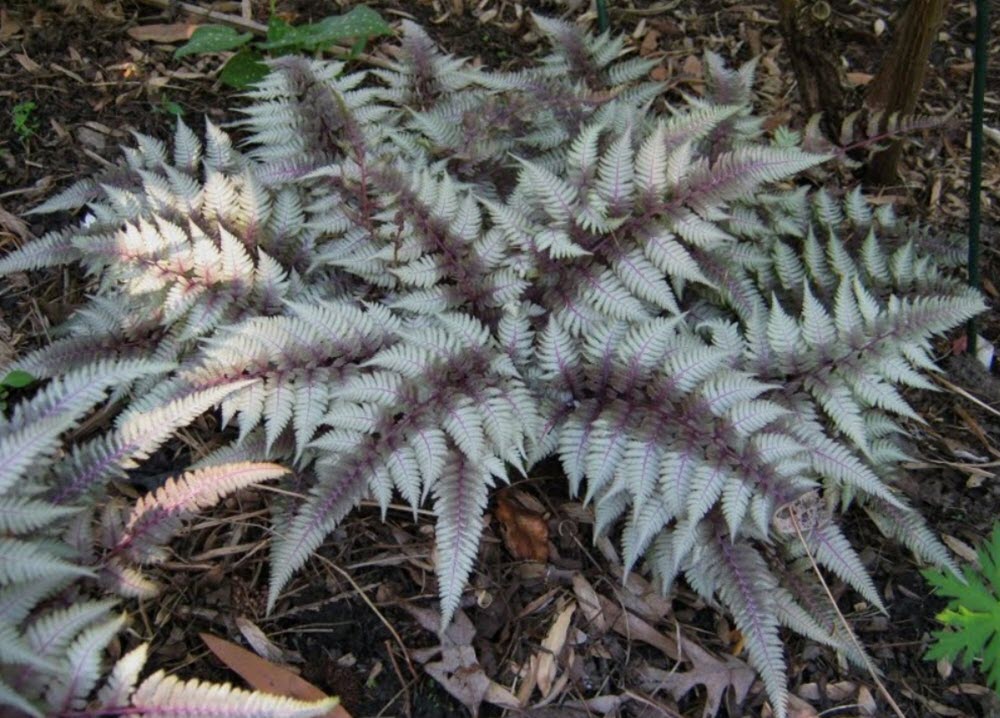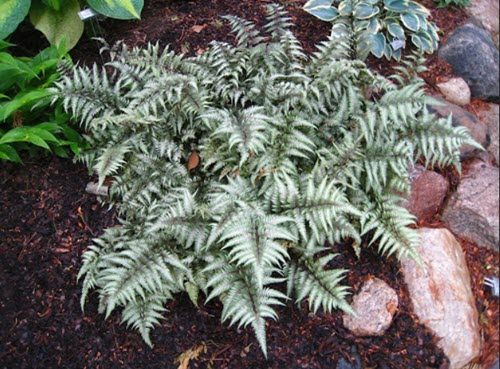Contents
This species is available in several different versions with different looks. The most commonly available version, usually sold as Athyrium nipponicum var. pictum, features pale silvery-green fronds that contrast agains a bright red stem. A. nipponicum var. pictum ´Red Beauty´ also have bright red stem, but the fronds are yellow. A. nipponicum var. pictum ´Metallicum´ sports a variegated silver, green and red foliage.

The Japanese painted (Athyrium nipponicum) fern is a cold-tolerant species which has turned it into a popular garden fern in temperate parts of the world. It will wilt during the winter season and grow new foliage in spring. In gardens, it can be grown directly in the ground or in containers. It is a common choice for edging a shade border or adding greenery to a rock garden.
Short facts
Common name: Japanese painted fern
Family: Athyriaceae
Height: Up to 60 cm
Temperature: Can survive frost, but will go dormant. New foliage grows out in spring.
Light: Partial shade to full shade
Watering: Thoroughly during the active growth period.
Native range and habitat
This species is native to East Asia, where it is chiefly found in Japan, the Korean penninsula, Taiwan, and northern China.
Description
This is a terrestrial fern with creeping rhizomes and a weeping, low and mounding growth-style. This is one of the most colourful ferns in the trade and it is availble in many different versions that look different from each other.
A whorl of brigth green pinnate triangular fronds develop from the basal rootstock, with each frond being 25-40 cm tall and 15-25 cm wide. The pinnae are broad and deeply lobed.
Caring for Japanese painted fern
Light and position
 This plant can be grown in full shade, but light shade leads to better frond colours.
This plant can be grown in full shade, but light shade leads to better frond colours.
It can survive in full sun if you give it a lot of watering and air humidity. Full sun will lead to more vertical growth, which many gardeners dislike.
Soil
This fern can handle a wide range of rich and evenly moist soils, including clay soil and soil-sand mixes. We recommend that you put plenty of well-rotted leaves, garden compost and/or pine needles in the hole before you plant this fern in your garden.
Temperature
This is a cold hardy fern. Frost will make the plant go dormant and wilt, but in this resting state it can survive the winter season in many parts of the world and will produce new foliage in spring. In late autumn, add dry mulch (of straw or bracken) to protect the crown of the fern.
Watering
During the active growth period, this fern needs plenty of water. Only allow the substrate to dry slightly between waterings. The best part of the day to water is morning, since this gives the fronds plenty of time to dry before night.
Nutrients
Each fall or spring, add 5-10 cm of compost or peat moss to the spot where the fern is growing.
Salt
This fern is sensitive to salt.
